
What Is Overtourism and Why Is It a Problem?
In 2016, Skift published an article titled “Exploring the Coming Perils of Overtourism” that discussed the hazards of excessive tourism in popular destinations. In the years following, the term “overtourism” appeared in countless media headlines worldwide. International tourism had been growing rapidly and exponentially, more than doubling between 2000 and 2019 and the need to manage this growth more responsibly couldn’t be ignored.
Just when it seemed that tourism was spiraling out of control, the industry experienced an unprecedented downturn due to the COVID-19 pandemic. The industry’s recovery presented an opportunity to rethink the traditional tourism model. However, as travel restrictions were lifted, people were itching to get out, and tourism quickly rebounded. By the end of 2024, international tourist arrivals are expected to surpass pre-pandemic levels. Unfortunately, the issues associated with overtourism have resurfaced, highlighting the urgent need to manage visitation and protect the integrity of popular destinations.
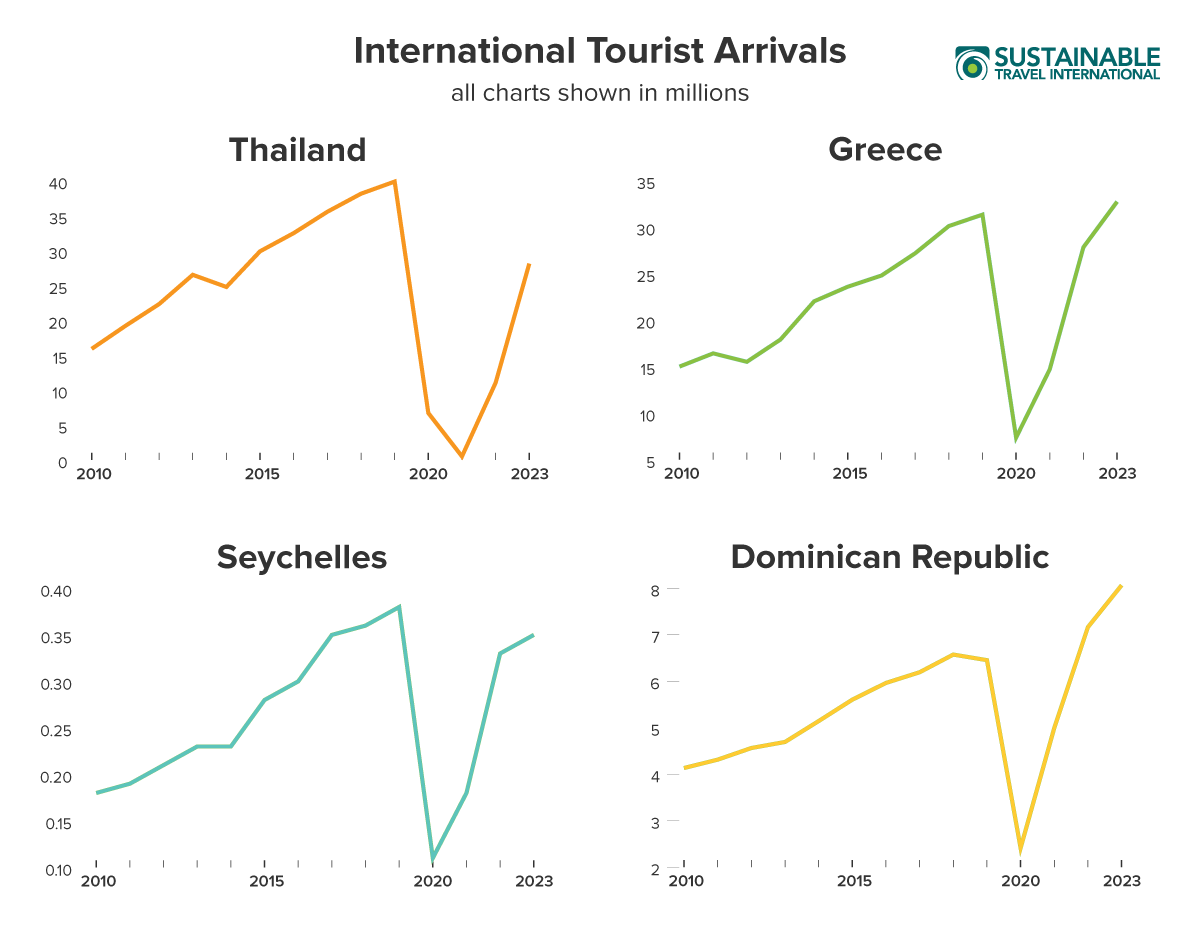
What is Overtourism?
Overtourism occurs when too many visitors flock to the same place, causing detrimental impacts on the environment, local communities, and visitor experience. In other words, it’s when we love a destination to death.
So, how many visitors is too much? The answer isn’t straightforward because the threshold varies from one place to the next. A destination’s capacity to handle visitors is influenced by factors like infrastructure, the availability of natural resources, environmental resilience, physical space, and community perceptions. The tipping point occurs when the number of tourists exceeds the destination’s ability to manage them sustainably, and the negative impacts outweigh the positive.

Strategic planning and proactive management are necessary to prevent overtourism. A sustainable destination balances economic growth with resource management, conservation, visitor enjoyment, and resident satisfaction. Through carrying capacity studies and resident surveys, we help destinations monitor tourism’s impacts and understand the implications of growth to inform policies and initiatives.
Negative Impacts of Overtourism
Overcrowding and Congestion
When too many visitors converge on the same destination, it can lead to severe overcrowding, degrading the visitor and resident experience. Roads become grid-locked, visitors must wait in long queues for attractions, and it can be impossible to photograph famous sites without a backdrop of tourists.
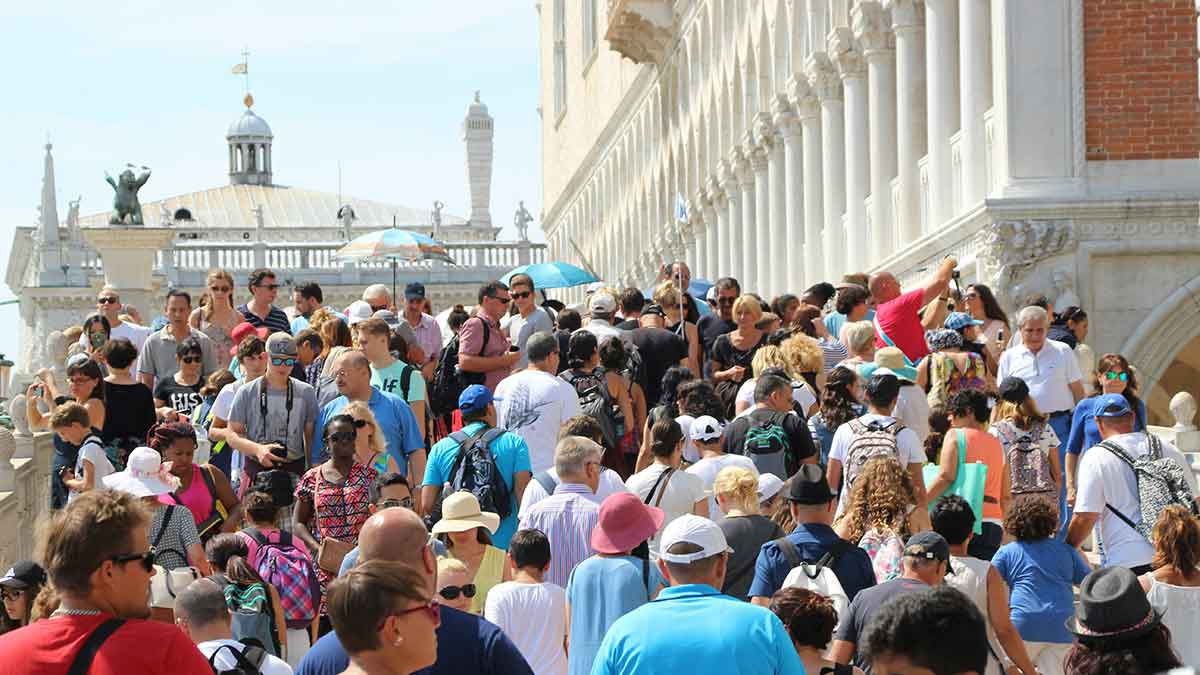
Overcrowding is especially problematic in historic cities like Venice and Dubrovnik, which have narrow old streets designed for smaller foot traffic. Iconic sites and attractions like St. Mark’s Square can be jam-packed with tourists during the high season. Rural destinations and developing nations experience similar challenges when tourism growth outpaces transportation improvements. Islands are also highly susceptible to congestion due to their limited land space. Maui’s Road to Hana struggles with traffic jams as more tourists make the drive and park illegally, turning what should be a scenic trip into an aggravating experience. Similarly, while Santorini’s white and blue cliff sides are undeniably picturesque, the experience is less enjoyable when visitors are forced to fight crowds at popular viewpoints.
Wear and Tear
As destinations are overrun with visitors, wear and tear accelerates on infrastructure and natural and cultural sites. The constant use of roads, trails, and public facilities can lead to rapid deterioration without routine maintenance.
One example is Cambodia’s 900-year-old Angkor Wat temple complex. The famous heritage site attracts millions of visitors annually, resulting in preservation challenges. Heavy foot traffic erodes the ancient stone floors and steps while touching and climbing damage the intricate carvings. Extensive efforts have been made to conserve Angkor Wat and repair its fragile structures.

Community Resentment
While crowding and physical damage may be the most obvious symptoms of overtourism, they are not the only adverse effects. Tourism bears great potential to improve local quality of life and drive economic advancement, but unchecked growth can have the reverse effect. The influx of tourists can drive up the cost of living, making it difficult to find affordable housing and displacing residents. Despite the substantial revenue generated by tourism, many locals feel left out of the booming visitor economy, filling low-wage jobs while profits primarily benefit external investors and large corporations. This disparity fosters resentment among residents, escalating social tensions as they feel tourism degrades their quality of life.
Tourists’ behavior can exacerbate the situation when they disrespect local customs, vandalize sacred sites, or intrude on local life. Even noise from tour guides’ loudspeakers can be a nuisance, and the presence of massive cruise ships an eyesore.
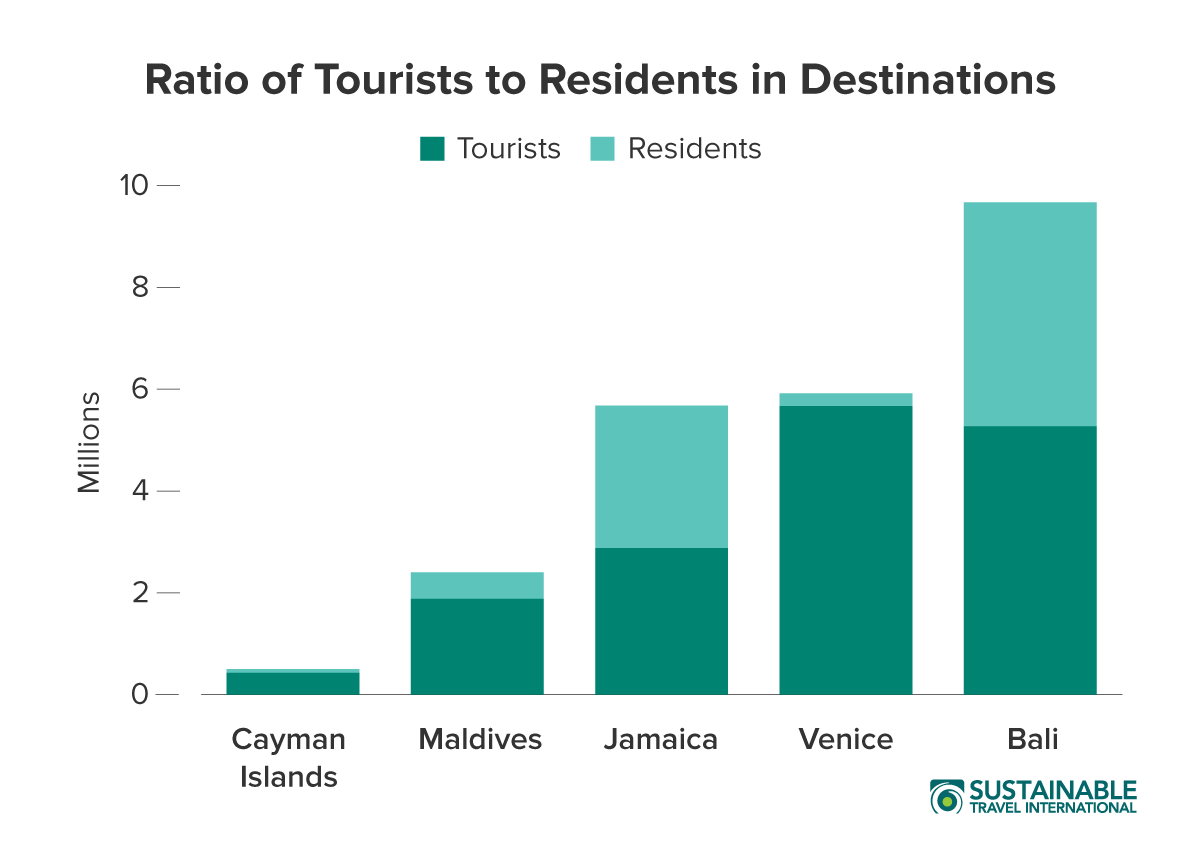
Growing resident discontent has sparked widespread protests in various destinations across Spain. Tourism protests have been a recurring issue in Barcelona for years, and residents have once again taken to the streets following the resurgence of visitation post-COVID, chanting slogans like “Tourists go home.” Similar scenes recently unfolded on other heavily-touristed destinations like the Canary Islands and Mallorca as tens of thousands of residents voiced dissatisfaction with the industry. Residents are using the protests to call out issues associated with the existing tourism model, which include soaring housing costs, overcrowding, nuisance, inequitable economic benefits, and environmental concerns.
Competition for Resources
As visitor numbers increase, demand for water, waste management, and energy can outstrip available resources. This can lead to shortages, increased prices, and competing demands that exacerbate discontent among local communities.
Tourists tend to consume considerably more water than residents. Amenities like pools, landscaped resorts, and golf courses put additional strain on local freshwater resources. Small island destinations are particularly prone to water scarcity, and peak tourist season often coincides with periods of water stress. The Caribbean, Greek, and Hawaiian islands all experienced water crises in recent years. As climate change worsens, severe droughts become more frequent, placing even greater pressure on already limited water supplies.

Environmental Consequences and Ecosystem Degradation
As destinations become more popular, natural ecosystems are converted to accommodate resorts, marinas, and other tourism infrastructure. Tourism development can destroy critical wildlife habitats like mangroves and turtle nesting beaches when it is not adequately regulated. Without proper waste and water treatment systems and sustainable energy generation, these developments can cause environmental damage once operational.
Tulum, once a sleepy town, has transformed into a hip destination marketed as an eco-chic haven. Yet most of its beachfront hotels run off dirty diesel generators, and their untreated sewage seeps into underground cenotes and rivers, eventually polluting the world’s second-largest reef system. Thailand’s iconic Maya Bay lost so much coral due to pollution from day-trippers that it was temporarily closed down for two years.
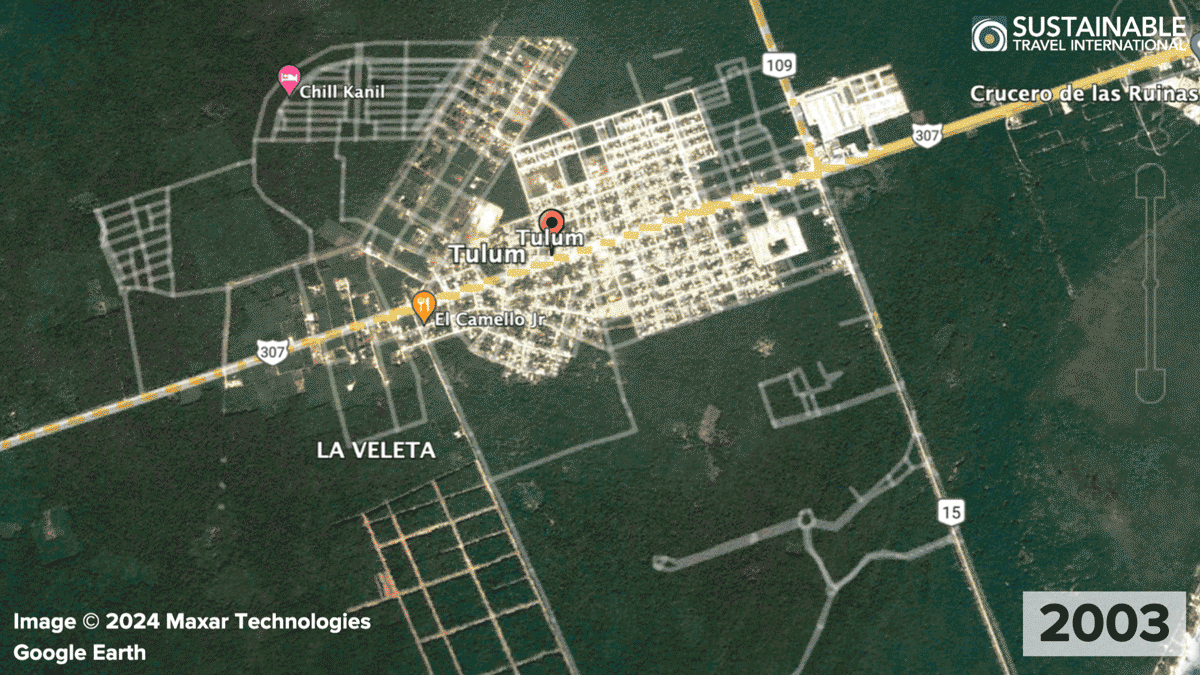
Mount Everest is another destination ill-equipped to handle the waste generated by large numbers of tourists. The mountain is littered with trash, abandoned gear, and human waste left behind by climbers. As the snow melts, local water sources become contaminated, leading to infections among climbers and local communities.
The Causes of Overtourism
The Growth of the Global Middle Class
The global middle class has experienced rapid growth, with an estimated 140 million people joining its ranks annually as of 2017. This surge is largely driven by rapid economic development in major emerging markets, particularly China and India. These countries’ economic advancements have created better job opportunities and increased incomes, elevating many people to the middle class.
With higher incomes, individuals have more disposable income for leisure activities such as travel, enabling them to explore destinations beyond their borders. An example is the dramatic increase in outbound tourism from China, where international departures grew from 10 million in 2000 to over 150 million in 2019.
Travel Is Cheaper and More Accessible
Years ago, the middle class couldn’t afford travel, as international trips were a luxury reserved for the wealthy. Today, travel is far more affordable and accessible to the masses.
Increased competition, the rise of low-cost carriers, and advancements in aircraft technology have significantly lowered airfares. When you adjust for inflation, the average round-trip domestic U.S. airfare dropped from $525 in 1995 to $388 in 2024. As prices became cheaper, the number of air passengers skyrocketed. In 2019, there were 4.5 billion flights taken globally, nearly triple the amount just two decades earlier.

High-volume, low-cost tour packages that bundle accommodations, transportation, and activities have also made travel more affordable. Furthermore, the advent of online travel agencies (OTAs) like Expedia and Booking.com has made it easier for modern consumers to compare prices and secure the best deals.
Cruise Tourism
Many travelers seeking a budget-friendly vacation choose to travel by cruise due to the value it offers for the money. Despite concerns that the COVID-19 pandemic might spell the end of cruising, the industry rebounded faster than other forms of travel. Global cruise passengers reached 31.7 million in 2024, surpassing pre-pandemic levels by 7%. Projections indicate this number will soar to nearly 40 million by 2027.
While cruising offers an affordable way to visit multiple destinations, it comes with a complex set of challenges. New cruise ships are often “bigger and better” than their predecessors, with the largest vessel boasting a capacity of 7,600 passengers. This massive influx of tourists to a destination all at once can strain local infrastructure and cause congestion. Only certain ports can accommodate such large ships, leading to a higher concentration of tourists in those destinations. Cruise passengers typically have minimal time in each port and spend much of their money on board or through tours booked via the cruise line, resulting in limited economic benefits for local communities. According to the World Bank, cruise tourists make up over two-thirds of the Caribbean’s tourist arrivals, yet they spend only one-tenth as much on-shore as overnight visitors. This results in a disproportionate balance between tourism’s positive and negative impacts.
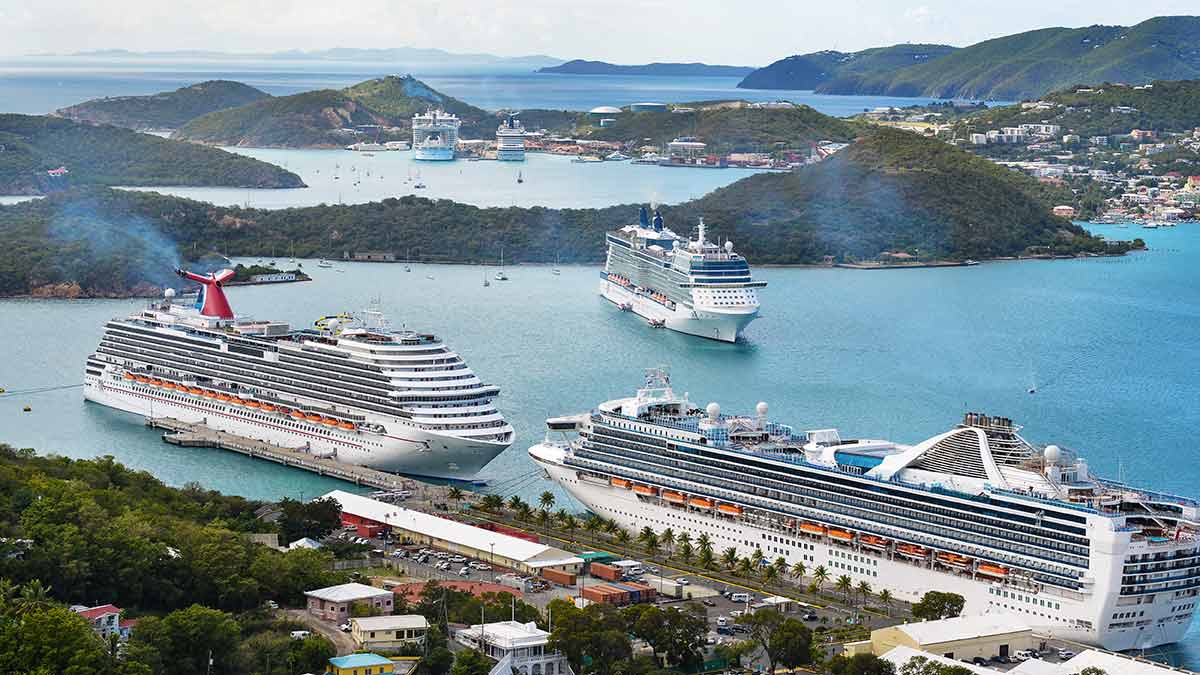
The Rise of Short-Term Rentals
The boom in short-term rentals has contributed to overtourism in popular destinations like Barcelona and Venice. Home-sharing platforms like Airbnb have facilitated this growth, with over 5 million hosts welcoming more than 1.5 billion guest arrivals since the company’s inception.
In 2015, Barcelona’s average long-term rental price was €11 per night, while the average Airbnb listing was €71 per night. This disparity incentivizes property owners to opt for short-term rentals, which are more profitable than long-term leases. Converting long-term rental units into short-term vacation rentals results in less housing for residents. This drives up the cost of living, often forcing residents to move out of the neighborhoods they grew up in.
Despite these challenges, controlled short-term rentals can help alleviate overtourism by distributing tourists across different neighborhoods, reducing the pressure on city centers and hotspots. Additionally, short-term rentals can promote cultural exchange and supplementary income when residents rent out rooms.

Changing Consumer Priorities
Consumers today prioritize travel more than they used to, dedicating a greater proportion of their discretionary income to it. U.S. consumer spending on foreign travel grew more than four times faster than physical goods between 2014 and 2016, highlighting this shift in priorities.
This trend is especially notable among younger generations, like Gen Z and Millennials, who value unique and meaningful experiences over material possessions. A survey of 18 to 25-year-olds found they prefer to spend their money on travel and experiences rather than on things.
Social Media as a Source of Travel Inspiration
Social media has heightened younger generations’ desire for travel experiences by simplifying the sharing of trip photos and videos. This widespread sharing has cultivated a sense of peer pressure, widely known as FOMO, which stands for “fear of missing out,” prompting people to add the destinations they see online to their travel bucket lists.
The concept of the “bucket list” is nothing new; iconic attractions like the Eiffel Tower and the Trevi Fountain have long been considered must-visits. However, social media and the ease of sharing photos online have amplified the bucket list effect, turning little-known picturesque locations into tourist hotspots.

Online content helps many people find travel inspiration, with 75% of travelers saying they chose a specific destination because of social media. People want to recreate influencers’ stunning photos, drawing them to the same locations. This phenomenon is evident in places like the Tegallalang Rice Terraces and Pura Lempuyang Temple in Bali, where tourists often wait in line for hours to take their photos and the crowded paths of Italy’s Cinque Terre. While this trend can bring tourism to new destinations, it also puts immense pressure on popular sites, often diminishing the visitor and resident experience. Some tourists engage in reckless, illegal, or disrespectful behavior to capture impressive photos, causing damage and heightening tensions with local communities.
Digital Nomadism
As remote work became a necessity during the pandemic, it changed the status quo in the workplace. This sudden change demonstrated the feasibility and benefits of remote work, leading more companies to adopt work-from-anywhere policies. These new flexible work policies offer employees far greater freedom in where they work, giving rise to an increasing number of digital nomads who work from other destinations.
While company policies have evolved to support remote work, certain limitations still affect where digital nomads choose to work. Locations with reliable internet, co-working spaces, lower living costs, abundant leisure activities, and favorable visa regulations are particularly attractive to digital nomads. Destinations like Lisbon, Portugal, and Mexico City have become popular digital nomad bases. However, the influx of foreigners with higher spending power can drive up local housing prices, leading to conflicts with residents.

Lack of Tourism Regulation and Planning
Tourism growth, in itself, isn’t inherently problematic. The issue arises when this growth occurs haphazardly, without careful oversight and planning. Many destinations lack effective tourism management strategies, resulting in unsustainable visitation and development.
The absence of proper planning and regulations can lead to destinations welcoming more visitors than they can adequately support. This results in the problematic impacts discussed above, such as overloaded waste management systems, gridlocked roads, and locals not reaping the economic benefits of tourism. To combat overtourism, destinations must implement comprehensive tourism management plans that balance economic benefits with environmental sustainability, visitor experience, and community well-being.
Examples of Destination Solutions to Overtourism
Several destinations are implementing various measures to manage visitor numbers and alleviate the impacts of overtourism. For example, Amsterdam has imposed limits on river cruises and banned the construction of new hotels to reduce congestion and preserve quality of life. Similarly, Dubrovnik has capped the number of cruise ships that can dock each day, and Barcelona announced a plan to ban short-term rentals to make the city more affordable for residents. Popular attractions, such as U.S. national parks and the Acropolis in Greece, have implemented timed entry permits to control the number of visitors at any given time.

Meanwhile, other destinations are taking steps to influence visitor behavior and nudge visitors elsewhere. For instance, Venice introduced a day-tripper fee to discourage visitation on peak days. In Japan, a screen was installed to block an Instagrammable view of Mt. Fuji, and the government is partnering with influencers to promote lesser-visited destinations. Florence launched a campaign to educate tourists on acting respectfully toward the city and its residents.
How Can Tourism Companies and Travelers Take Action?
Destination-level policies are just part of the solution to combat overtourism. Travel companies can also play a crucial role by planning trips and offering tourism experiences that alleviate pressure on over-visited destinations, creating meaningful community benefits, and educating visitors and nudging them toward more sustainable practices. To dive deeper into how travel companies can help avoid overtourism, read our blogs on visitor dispersal strategies and impact management to explore specific tips and examples.
Visitors can take action by staying informed about overtourism issues, making conscious travel decisions that help distribute tourist traffic, and engaging in sustainable behaviors to minimize their negative impact. Simple actions like visiting at off-peak times, respecting cultural norms, reducing waste, and supporting local businesses can make a difference.
For more inspiration, download our sustainable travel tips list and read our blog on the top ten tips for responsible travel. By making mindful travel choices and encouraging others to do the same, we can all overcome challenges like overtourism and ensure destinations and communities flourish for years to come.
Link nội dung: https://blog24hvn.com/visitors-with-more-abundant-a68889.html